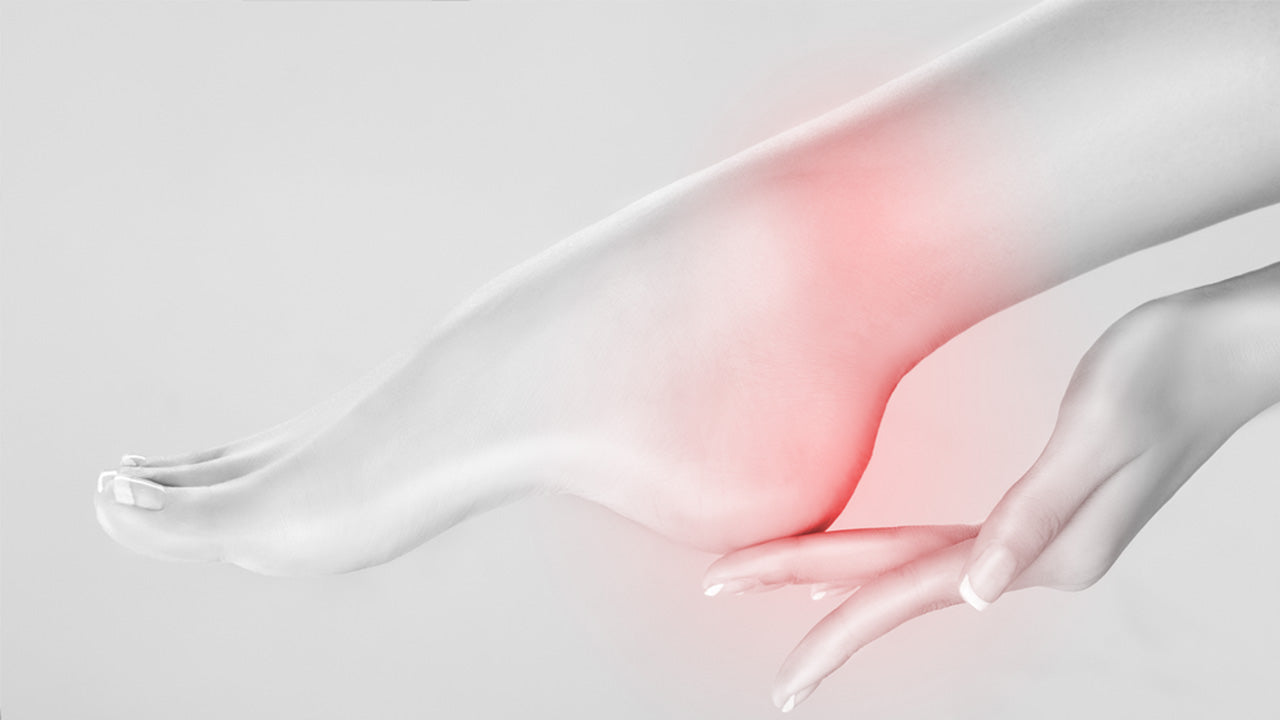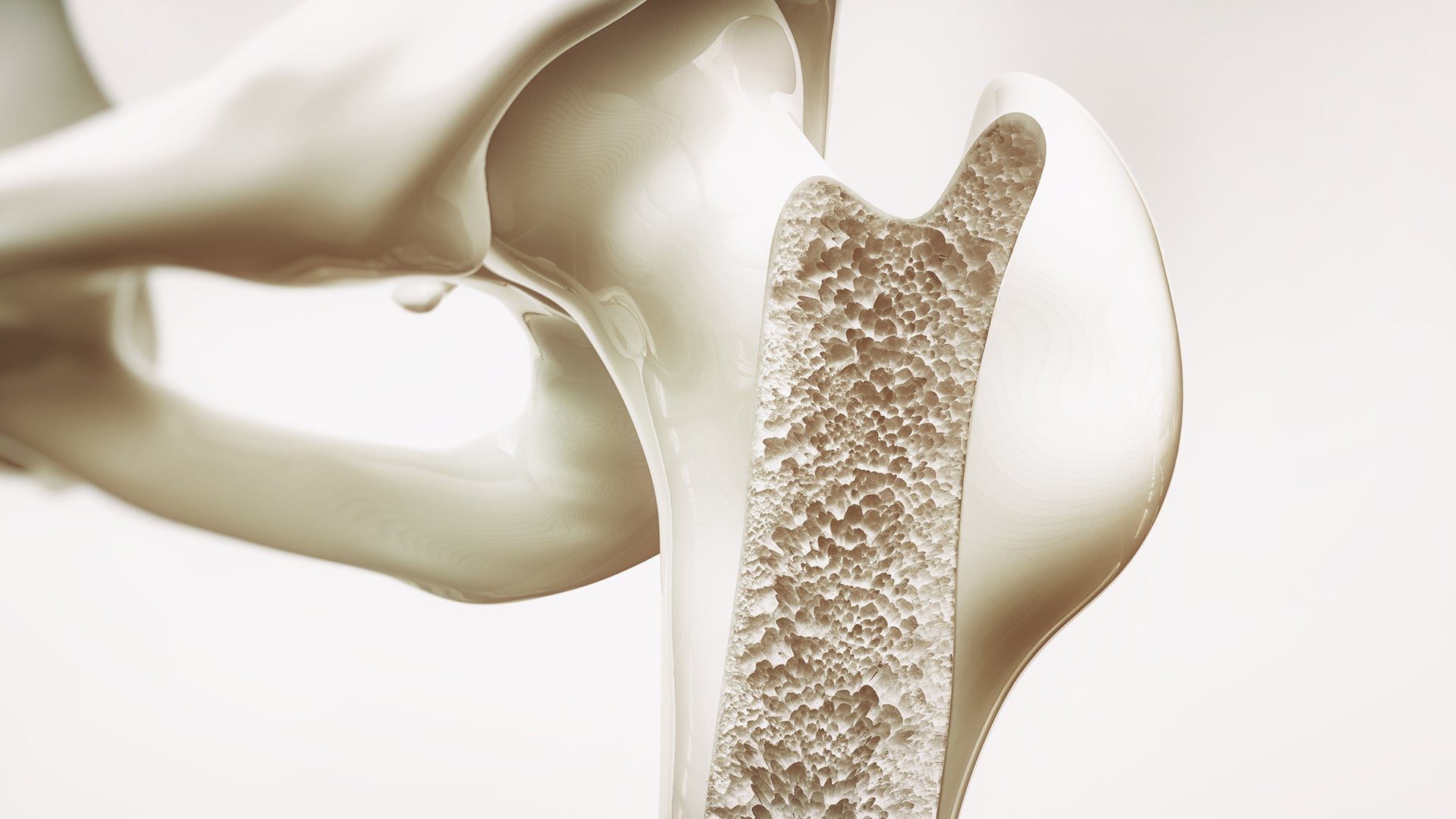Do You Have an Overpronation Problem? Learn About Symptoms, Underlying Causes and Treatment Options
 By: by Amino Science
By: by Amino Science

If you’ve ever heard someone say they have “flat feet,” what they really mean is that they have an overpronation problem. Overpronation occurs when the arch of your foot collapses downward, causing your entire foot to roll inward. This can happen while you’re walking, running, or even just standing still.
Our feet, made up of 52 bones, 66 joints, 214 ligaments, and 38 muscles, are the only point of contact many of us regularly make with the ground. Our feet propel us—literally—through our lives. We take, on average, about 6,000 steps each day. When something’s wrong with our feet, we want it addressed—and fast.
When left untreated, overpronation can cause pain, stiffness, swelling, and other, more serious problems. Fortunately, there are a number of ways to correct the problem, no matter its underlying cause.
Read on to learn about the mechanics of foot pronation, how to diagnose an overpronation problem, and treatment options.
What Is Foot Pronation?
Merriam-Webster defines pronation as the “rotation of the medial bones in the midtarsal region of the foot inward and downward so that in walking the foot tends to come down on its inner margin.”
Our feet have two equally important functions: stability and mobility. They provide a stable base of support for the weight of our bodies that allows us to stand upright as well as to propel ourselves forward. Our feet are also mobile in ways that help minimize the impact of shock and let us maintain contact with the ground even when its surface is uneven.
When our feet are functioning normally, they’re stable and mobile at the same time. Experts estimate that approximately 30% of the population have normal foot function. The other 70% of us either over- or underpronate. Overpronation is far more common, accounting for 95% of foot function abnormalities.
It’s normal to have some degree of overpronation or underpronation (also called supination), since no one has a totally symmetrical, perfectly balanced body. But if a pronation deviation becomes too pronounced, it can cause a multitude of issues. Overpronation and underpronation rank as two of the most common postural problems in adults.
The first indications of foot pronation problems tend to relate to the feet themselves, for instance, aching arches or sore heels. The pain can then spread to your ankle and knee joints, cause calf stiffness and tenderness, and even lead to low back pain.
Over or underpronation affects how you distribute your bodyweight while moving and while standing still, and can make you more susceptible to injuries.
Your body functions as a single kinetic chain. Too much pronation in either direction negatively impacts your gait cycle, which takes place as your body moves forward. The subtalar joint helps your foot rotate, which provides shock absorption, allows for the navigation of uneven terrain, and supports proper positioning of the pelvis and spine.
Overpronation occurs when, at the end of the gait cycle, you push the front of your foot off the ground using primarily your big toe and second toe. This imbalance puts too much pressure on those two toes and forces them to absorb too much shock. Over time, this can lead to injuries such as runner’s knee, stress fractures, plantar fasciitis, Achilles tendinitis, and more.

Overpronation is such a common problem because many of us wear unsupportive shoes and walk primarily on hard, flat surfaces. Those factors, especially in conjunction with other characteristics, contribute to changes in the soft tissue structures of your feet that cause joints to loosen and bones to shift.
Do Your Feet Overpronate?
A foot that overpronates acts, as physiotherapist Grant Fedoruk put it, “like a loose bag of bones during the walking cycle.” This places stress on tendons and ligaments in your foot and ankle, resulting in a foot that’s quite flexible, but also unstable and inefficient. It has to work harder to move your body forward, meaning it tires quickly and puts excess stress on the rest of your lower body.
Common Causes of Overpronation
There are a variety of factors that can cause or contribute to pronation problems, including:
- Genetics: By far the most common cause. If your arches are naturally quite flat, you are almost certain to overpronate.
- Muscular compensations: Poor posture or old injuries can result in weakness or even scarring that forces certain muscle groups to compensate.
- Poor form: If you run with bad form, or while wearing uncomfortable, unsupportive shoes, you can develop pronation problems.
- Weakness: If you’re fairly inactive, or have a limited range of motion due to aging, or have weak hip adductors and abductors, you’re more likely to overpronate.
- Overuse: Not allowing adequate recovery time between workouts and standing for long periods of time without taking breaks can cause you to develop chronic tightness in your calf muscles that puts you at greater risk of overpronation.
- Loss of cartilage: Losing cartilage in the subtalar joint of foot, typically due to arthritis, is a common cause of overpronation.
- Tibialis posterior tendon dysfunction: The tibialis posterior tendon is the primary dynamic stabilizer through the middle of your feet and your arches. It supports the arch and helps to raise the small bones in that section of your foot while maintaining appropriate rigidity. Dysfunction of the tibialis posterior tendon is the leading cause of “acquired flatfoot deformity,” or severely fallen arches, in adults.
Symptoms of Overpronation
If you’re experiencing any of the following symptoms, the underlying cause may be overpronation.
- Pain radiating up from your feet. Typically, this will occur after being on your feet for a long period of time. It may spread from your arches all the way up to your low back.
- Swelling in your heels or ankles. Often contained to the middle or side of the foot or heel, though in some cases the toes also swell.
- Stiffness in feet. A reduced range of motion in the feet or the lower body as a whole can be a sign of overpronation.
If you’re experiencing any of those symptoms, you may want to check if you overpronate. There are a few methods for self-assessment you can try on your own if you’re not ready to schedule an appointment with a professional.
How to Tell If You Overpronate
You can quickly and easily assess the pronation patterns of your feet using any of the following three methods.
- Check out your arches. Look at your feet while standing—it may be helpful to use a mirror. If you can’t see a clear space between the floor and the middle of your foot, which ideally arches upward, it’s likely that you overpronate.
- Check out your running shoes. This method only works if you’re a runner, but it’s quite a helpful way to confirm any suspicions you might have about a possible pronation problem. If you notice that most of the wear is on the inner part of your running shoes, that shows you tend to roll to the inside of your foot.
- Check out your footprints. Take a few steps with bare, wet feet, and then look at the prints. If you pronate properly, you’ll see toeprints connected to your heelprint by a print of about half the width of your foot. If you overpronate, you’ll see a print between your toes and heels that’s the full width of your foot.
If these methods yield unclear results, and you’re experiencing pain or dealing with chronic injury, you should visit a podiatrist or physical therapist to get a definite diagnosis.

How to Treat Overpronation
Like any other muscle in your body, the arches of your feet can be trained to function better. In order to confirm that you do have a pronation problem, a medical professional will typically conduct a physical exam of your lower extremities, paying particular attention to visible imbalances, loss of function, and loss of sensation.
What Medical Professionals Can Do
The most common treatment podiatrists recommend for overpronation is shoe inserts, also called orthotics or orthotic devices. The orthotic shoe inserts for overpronation—typically arch or heel support, or a combination of the two—help your arches lift and prevent the inward rolling motion that can cause pain and other problems. Orthotics can reduce pain while standing, walking, and running. They can also help to prevent muscle strains due to overcompensation.
If the pronation problem is quite pronounced, additional treatments may be needed. A physical therapist can work with you to find a set of stretches and exercises you can use to retrain your feet and legs to balance your weight properly.
In some rare cases, you may also need to wear braces to keep your lower legs in a posturally correct position. And if the pain associated with your overpronation becomes bad enough, a doctor may prescribe anti-inflammatory medication to soothe related swelling. In some very severe instances, surgery can be the best option to address a pronation problem. To help calm inflammation and speed up recovery from overpronation surgery, start taking Heal, a patented blend of essential amino acids, at least a month before surgery.
What You Can Do
One of the simplest and most effective ways to self-correct an overpronation problem is to pay attention to your posture when standing and your form when exercising. Bad form can lead to dysfunctions that cause foot, heel, and leg pain as well as injuries. Have you ever paid attention to your feet as you walk or run? Probably not. But doing so can help you identify and correct pronation problems.
First, the basics. Notice whether your heel hits the ground and rolls evenly forward, or whether it strikes abruptly. Also notice whether or not you’re lifting your toes as your foot leaves the ground. Next, pay attention to which part of your heel makes contact with the ground first—you want it to be the outside edge. If you lead with your heels—making you a “heel striker”—try landing closer to your midfoot. This can help you naturally land more lightly. And when you’re pushing off the ground, make sure to engage the ball of your foot and to avoid letting your big toe and second toe do more than their share of the work. This may feel quite unnatural at first, but with time, you’ll find it becomes instinctive.

Here are three more ways you can correct overpronation problems on your own.
- Stretch your legs. Overpronation can lead to stiffness, which can, in turn, make the underlying pronation problem worse. Regular stretching, especially after workouts, will help you increase your flexibility and range of motion as well as stimulate blood flow. Try using a foam roller to complement your stretching. Foam roll your calves before you stretch, holding each tender spot for at least 30 seconds.
- Get your muscles rubbed down. Massage can loosen and activate muscles, break up tissue adhesions, and help restore proper alignment. If your job requires you to spend a lot of time on your feet, or you are an athlete or very active, getting your calves, hamstrings, and quadriceps massaged can reduce pain from overpronation as well as help to improve your range of motion and correct pronation deviations.
- Choose the right shoes. Shoes with thick, firm soles can help correct a tendency to overpronate. Extra arch cushioning, in particular, can encourage your foot to rotate properly. Experts point to shoes with multi-density midsoles as a helpful way to stop feet from rolling too far inward. Spending more time barefoot can also help build strength through your ankles and feet as well as broaden your range of motion.


Up to 25% off Amino
Shop NowTAGS: conditions
Join the Community
Comments (0)
Most Craveable Recipes




 833-264-6620
833-264-6620



















